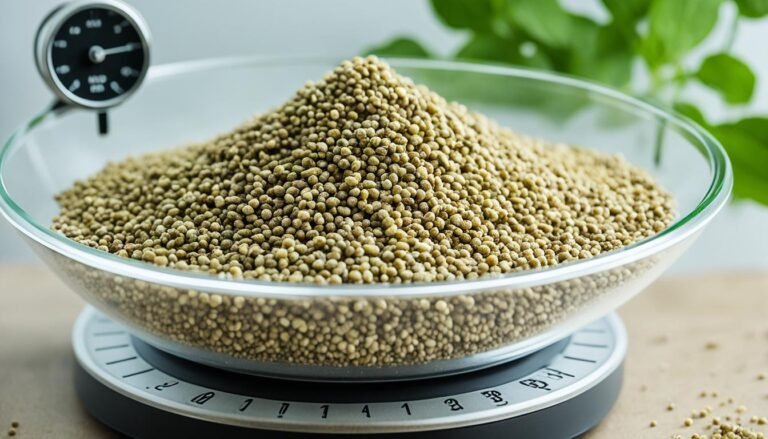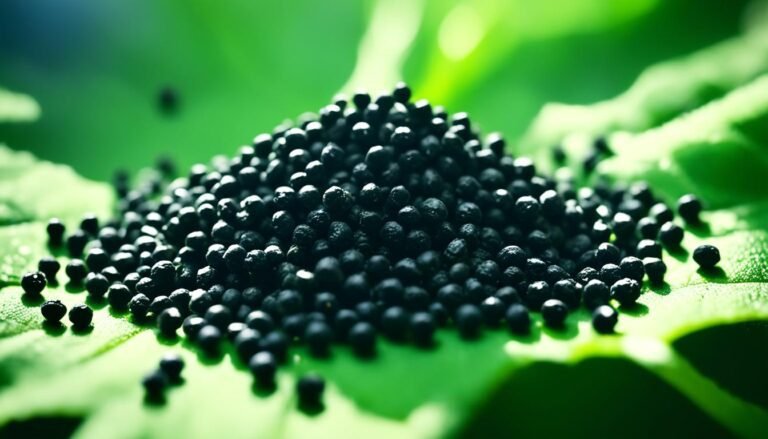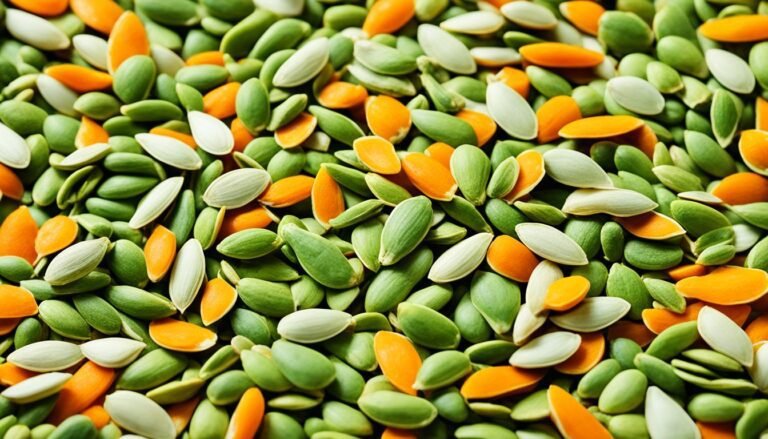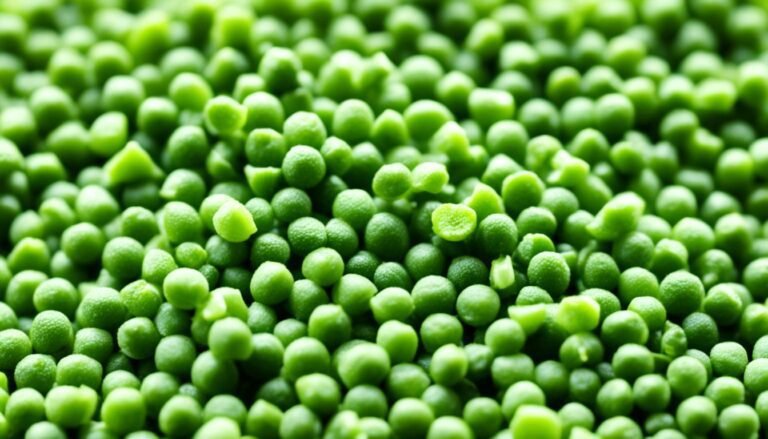Amaranth Flour: Benefits and Uses for Your Health

Amaranth is a superfood packed with protein, almost twice as much as corn or rice. Just a quarter-cup of dry, uncooked amaranth is a great source of protein. This protein is key for keeping muscles strong and blood flowing well.
Amaranth is full of antioxidants like gallic acid and vanillic acid. These antioxidants fight off harmful free radicals. They help lower the risk of heart disease and aging signs.
Studies show amaranth proteins are very close to animal proteins in the plant world. It’s also gluten-free and full of vitamin C. Vitamin C helps heal the body and keeps collagen strong.
Amaranth has been a main food for over 8,000 years. Ancient civilizations like the Inca, Maya, and Aztec ate it. Now, it’s becoming popular in the U.S. for its health benefits and kitchen uses.
What is Amaranth?
Amaranth: An Ancient Grain with Modern Appeal
Amaranth includes over 60 types of grains that have been grown for about 8,000 years. These grains were a key food source in the Inca, Maya, and Aztec civilizations. They are not true cereals but have similar nutrients and uses. Amaranth is loved for its unique taste and is now seen as a healthy food choice.
This grain is great for areas where meat is scarce. It keeps well, lasting up to 8 months in the freezer and 4 months in a pantry. The USDA says 100 grams of cooked amaranth is full of protein, fiber, and iron, depending on how it’s made.
Amaranth is gluten-free, making it perfect for people with celiac disease. It can also help prevent anemia, fight oxidative damage, and stop harmful bacteria.
People have been using amaranth for about 7,000–8,000 years. It’s been important in many cultures. But, be careful using it for health reasons. Watch out for allergies, stomach problems, and gas from eating too much fiber.
To cook amaranth, use a 2:1 water to grain ratio. You can also make amaranth flour for baking and cooking. A quarter cup of dry amaranth has: 179 calories, 31g of carbs, 7g of protein, 3g of fat, 3g of fiber, and 1g of sugar.
The Nutritional Powerhouse of Amaranth Flour
Amaranth flour is a nutritional superstar. It’s an ancient grain full of essential nutrients. These nutrients support health and well-being. It’s high in protein and minerals, making it a great addition to your diet.
One cup of cooked amaranth has 251 calories and 9.3 grams of protein. It’s also packed with minerals like manganese, magnesium, phosphorus, and iron. Plus, it has antioxidants that may protect against heart disease and cancer.
| Nutrient | Amount in 1 Cup of Cooked Amaranth | % of Daily Value |
|---|---|---|
| Calories | 251 | – |
| Protein | 9.3 grams | – |
| Manganese | 2.0 mg | 105% |
| Magnesium | 160 mg | 40% |
| Phosphorus | 346 mg | 36% |
| Iron | 5.2 mg | 29% |
Amaranth flour is a nutrient-dense and high in protein superfood. It boosts your health and well-being. It’s full of fiber, manganese, magnesium, phosphorus, iron, and antioxidants. This makes it a nutritional powerhouse for your pantry.
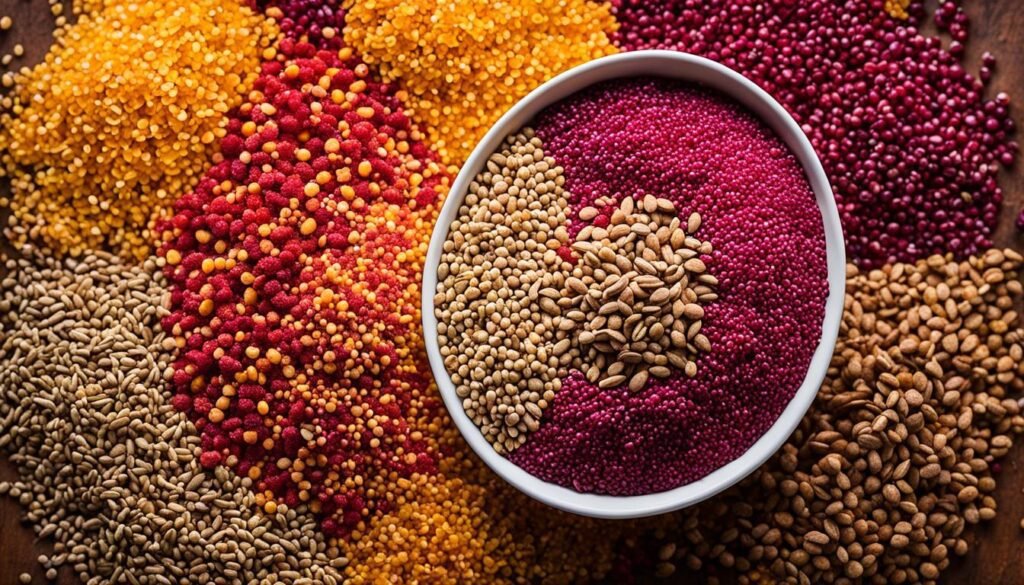
Benefits and Uses of Amaranth Flour
Gluten-Free and Anti-Inflammatory
Amaranth flour is packed with nutrients and has health benefits. It’s gluten-free, making it great for those with gluten issues. It also has anti-inflammatory properties, which can help reduce allergic reactions.
Animal studies show it can lower “bad” LDL cholesterol without touching “good” HDL cholesterol. Its high protein and fiber can help with weight loss by making you feel full and cutting down on hunger.
A half-cup of cooked amaranth has 125.5 calories, 1.9g of fat, and 7mg of sodium. It’s also rich in carbs, fiber, and protein. This serving size gives you 2.6mg of iron, 80mg of magnesium, and other important vitamins and minerals.
Each ¼ cup of amaranth flour has about 140 calories and 25 grams of carbs. It has 4 grams of fiber, 1 gram of sugar, 2 grams of fat, and 5 grams of protein. Its glycemic index is 107, higher than regular flour’s 85.
Compared to regular flour, amaranth flour is more nutritious. It has more protein, fiber, and minerals. This makes it a great choice for those looking for a gluten-free, anti-inflammatory, and nutritious flour alternative.

Versatile and Easy to Incorporate
Amaranth flour is a versatile ingredient that fits easily into your diet. You can sprout the grains before cooking to make them easier to digest. Just mix amaranth and water in a 1:3 ratio, boil, then simmer for 20 minutes. Enjoy the cooked amaranth as a porridge, add it to soups, or make healthy snacks.
You can also use amaranth flour in baking. Swap it for wheat flour in recipes for breads and muffins. Its mild, nutty taste goes well with fruits, nuts, and spices. This makes it great for smoothies, salads, and more.
Amaranth is a complete protein, offering all the essential amino acids for health. Cooked amaranth grains taste nutty and have a crunchy texture. Use amaranth flour as a gluten-free option in baking, adding an earthy flavor.
Adding amaranth to your meals has many health benefits. It’s high in fiber, helping with digestion and weight control. It also has minerals like calcium, iron, magnesium, and phosphorus, making it a nutritional powerhouse.
If you’re looking for gluten-free or plant-based options, amaranth flour is a great choice. It’s versatile and easy to use, making your cooking and baking better. Try different recipes and see how you can add this ancient grain to your daily meals.

Conclusion
Amaranth flour is a nutritional powerhouse that boosts your health and well-being. It’s gluten-free and fights inflammation, making it a top choice for healthy eating. This ancient grain lowers cholesterol, helps with weight loss, and gives you important vitamins and minerals.
It’s easy to add amaranth flour to many recipes, from sweet treats to savory dishes. This makes it a great way to make your meals healthier. Adding it to your diet can improve your heart health, reduce inflammation, and give you a unique flavor.
In short, amaranth flour is a superstar among whole grains. It’s packed with nutrients and can change your health and cooking for the better. Start using amaranth flour and discover a healthier and more delicious way to eat.
FAQ
What is amaranth?
Amaranth is a group of over 60 different species of grains. They have been grown for about 8,000 years. These grains were a key food in the Inca, Maya, and Aztec cultures.
What are the nutritional benefits of amaranth flour?
Amaranth flour is full of important nutrients. One cup of cooked amaranth has 251 calories, 9.3 grams of protein, and lots of minerals. These include manganese, magnesium, phosphorus, and iron. It’s also high in antioxidants.
How is amaranth flour beneficial for health?
Amaranth flour is gluten-free, making it great for people with gluten issues. It can help lower “bad” LDL cholesterol and has anti-inflammatory effects. Its high protein and fiber may help with weight loss.
How can I use amaranth flour in my cooking and baking?
Why is amaranth considered an “ancient grain”?
The name amaranth means “unfading” in Greek, fitting its long-lasting flowers. It was a main food for the Aztecs and is still important in Central America. Now, more people in the U.S. are discovering its nutritional value and kitchen uses.

